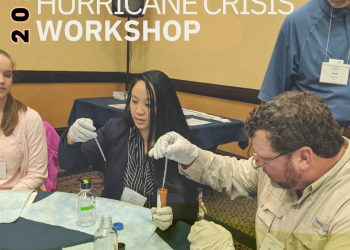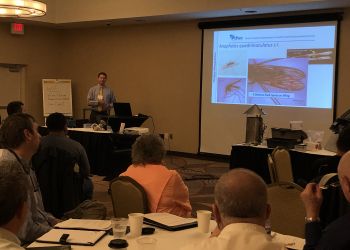How can a local health department respond to an onslaught of vector control (mosquito and rat) complaints? Easy, develop a special revenue fund to wholly fund an integrated pest management program. This self-sustaining funding mechanism allows for a proactive program aimed at minimizing the vector control disease burden.
Faced with the arrival of West Nile virus (WNV) in 2002, as well as increasing complaints about rats, the Shelby County Health Department (SCHD) was tasked with responding to the issue. SCHD funds its entire Vector Control program through a special revenue fee solely used for mosquito control, urban/rural sanitation, and rodent control operations. This fee is called the “Vector Control Fee” and is put on every utility rate payer’s bill each month. The cost is $0.75 per month, or $9.00 a year. Depending on fluctuations in the number of rate payers, SCHD receives approximately $3.2 million to $3.6 million per year for mosquito control operations. This funding allows SCHD to execute integrated pest management programs for all 900,000+ residents in Shelby County.
The Vector Control Fee solely funds all mosquito control operations, as well as urban/rural sanitation and rat control. For mosquito control, the fee allows the program to execute an integrated pest management program. The fee allows for a robust larviciding and adulticiding approach to mosquito control which also focuses on source reduction. The program also provides enforcement activities in door-to-door inspections and citations for standing water or mosquito-breeding items in public and private domiciles, as well as compliance and enforcement activity for high grass/weeds, rodent harborage, and general sanitation (trash/debris) on a property. Vector Control also performs outreach and education, connecting thousands of community members a year with tips and information on reducing the mosquito burden. After engaging local legislators and receiving their approval in the importance of a Vector Control Fee, SCHD used community input to assist in formulating the need for funding for vector control services while assessing what the community would pay for these services. SCHD believed obtaining community stakeholder buy-in would help the department assist in legislative support to approve this funding mechanism. This took place in Shelby County, Tennessee, and mostly served the City of Memphis. Funding through the Vector Control Fee began in 2005.
Outcomes were primarily positive. From 2002 to 2004, Shelby County experienced 100 WNV cases and 10 deaths. From 2005 the year the Vector Control Fee was instituted to present, there have been 88 cases with 5 deaths. In other words, over the past 13 years, Shelby County has not even reached the number of cases and deaths that we saw in just the three years prior to implementation of the fee. In the short-term, constituents with mosquito or rat problems could call Vector Control and get immediate customer service. The program began to pursue source reduction and started baiting properties and enforcing health code for high grass, weeds and other items. Customer service surveys were distributed in 2008 and the respondents shared positive feedback about minimizing vectors in the community. In the long-term, Shelby County has not seen rat-associated zoonotic diseases in almost eight years. Additionally, the fund allowed SCHD to respond to Chikungunya threat in 2014 as well as the Zika epidemic in 2016. Another long-term outcome for the program has been the development of a comprehensive educational component for constituents within Shelby County.
I hope this discussion generates opportunities for health departments looking to provide sustained zoonotic disease control operations. Our nation\‘s public health system is always so responsive we allocate funding in response to emerging/acute issue (e.g. public health and emergency preparedness, Chikungunya, Zika, Ebola, opioids); however, when the threat subsides for just a moment, the issue goes off the radar, never to be funded again. Given that, the advice I have for jurisdictions is to not let the concern over the threat wane vainly. When you have a bad zoonotic disease season or your jurisdiction encounters an emerging threat, the time is NOW to engage the community and your legislators to explore options for sustained funding to address these issues.
Visit NACCHO’s Vector Control Program webpage to access a recorded webinar on mosquito surveillance, the Vector Control Toolkit, and NACCHO’s 2017 Mosquito Control Capabilities report, or consider applying for NACCHO’s Vector Control Technical Assistance Program.





